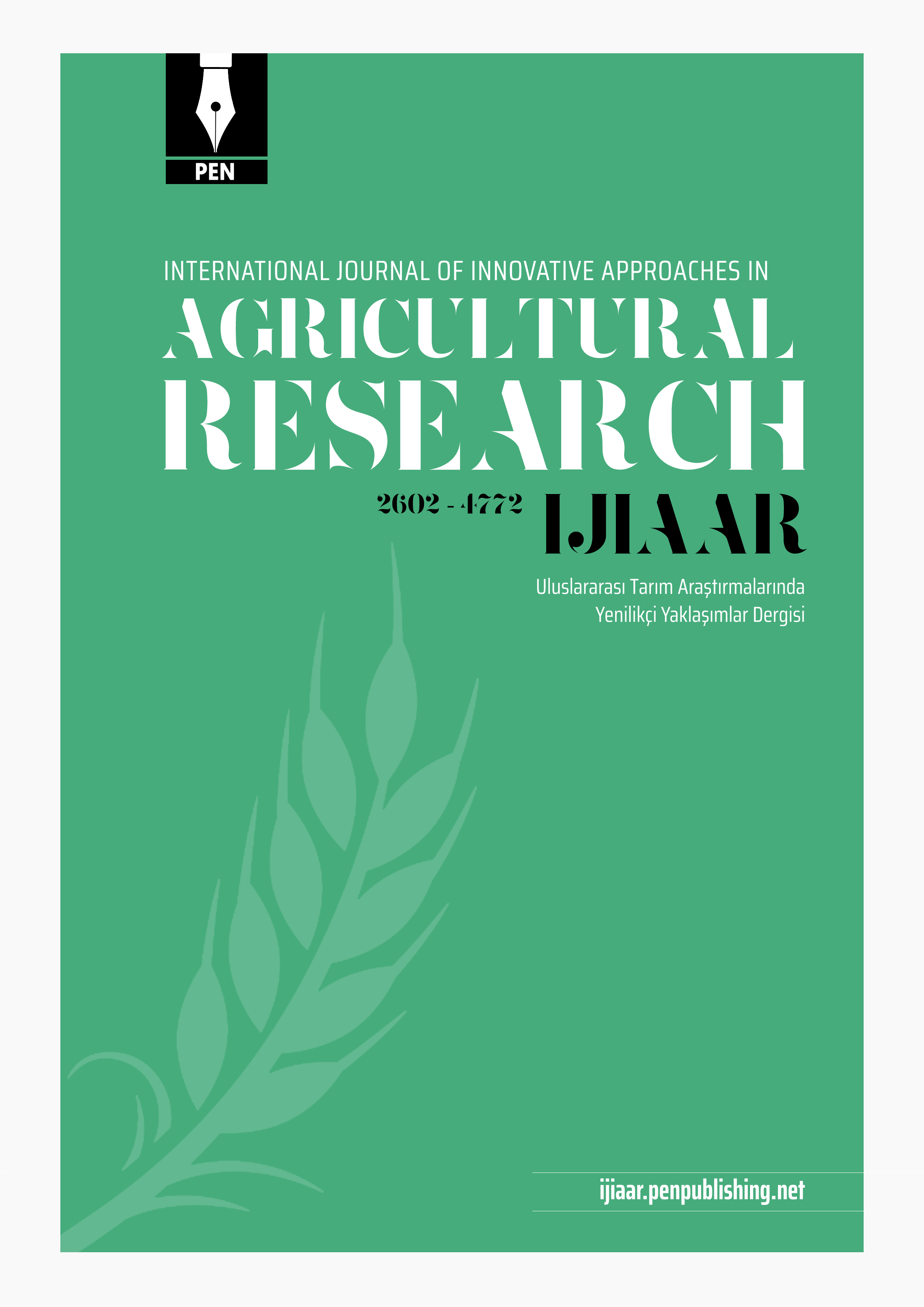
Uluslararası Tarım Araştırmalarında Yenilikçi Yaklaşımlar Dergisi
Yazarlar: Mansour Lynda, Maya, K Cheniti , K. Abbes
Konular:-
DOI:10.29329/ijiaar.2018.133.5
Anahtar Kelimeler:Dairy cattle -raw milk - diversity -physicochemical quality-hygienic quality-typology
Özet: The purpose of this work was to bring out the diversity of milks produced in the semi-arid Algerian Setif area and link it to the practices of pastoralists mainly in the food sector. In 24 dairy farms, representing different feeding strategies, a breeding follow-up detailing the ways of driving cows was adopted. In parallel, a seasonal analysis of the physicochemical and microbiological characteristics of 144 mixed milk samples (6 samples per season /spring, summer/ and per farm during two passages) in 24 farms was carried out. Milk quality parameters were highly variable and generally satisfactory. The physicochemical composition of the milks could be described as average for the majority of the samples, and marked a remarkable normativity. The majority of the farm milk samples displayed average fat content compliant. It was below 35 g/l in only 21.52% of the samples and showed significant fluctuations during the summer season, ranging from 31 to 41.7 g/l. Seven farms had average contents of above 35g/l for both periods. Variations in the butter fat between the different farms could be explained by the production and eating behavior strategies adopted by each farm. The protein content recorded in both seasons appeared much more stable than the fat content of all the milk collected. The average protein level for the 24 farms was 34.21g/kg. However, 8.33% of the milk samples in spring and 12.5% of those collected in summer had levels considered insufficient (less than 33g/kg). The microbiological results were highly variable with average counts of total aerobic mesophilic microflora exceeding the maximum standard of 105 CFU/ml. Hygienic quality was a concern for all milk samples despite the variety of situations. The typology of milk samples allowed to describe the diversity in milk quality based on variations in the levels of useful materials and fluctuations in total microflora.